Comprehensive Plant Anatomy: Leaves, Stems, and Photosynthesis
1/115
There's no tags or description
Looks like no tags are added yet.
Name | Mastery | Learn | Test | Matching | Spaced |
|---|
No study sessions yet.
116 Terms
Function of Leaves
Leaves are the solar energy and CO2 collectors of plants.
Photosynthesis
The process where photosynthetic organisms use solar energy (sunlight) and chlorophyll (green pigment) to synthesize carbon compounds.
Photosynthesis Equation
6 CO2 + 6 H2O → C6H12O6 + 6 O2
Leaf Primordia
All leaves originate on the shoot's apical meristem as a bulge of tissue called leaf primordia.
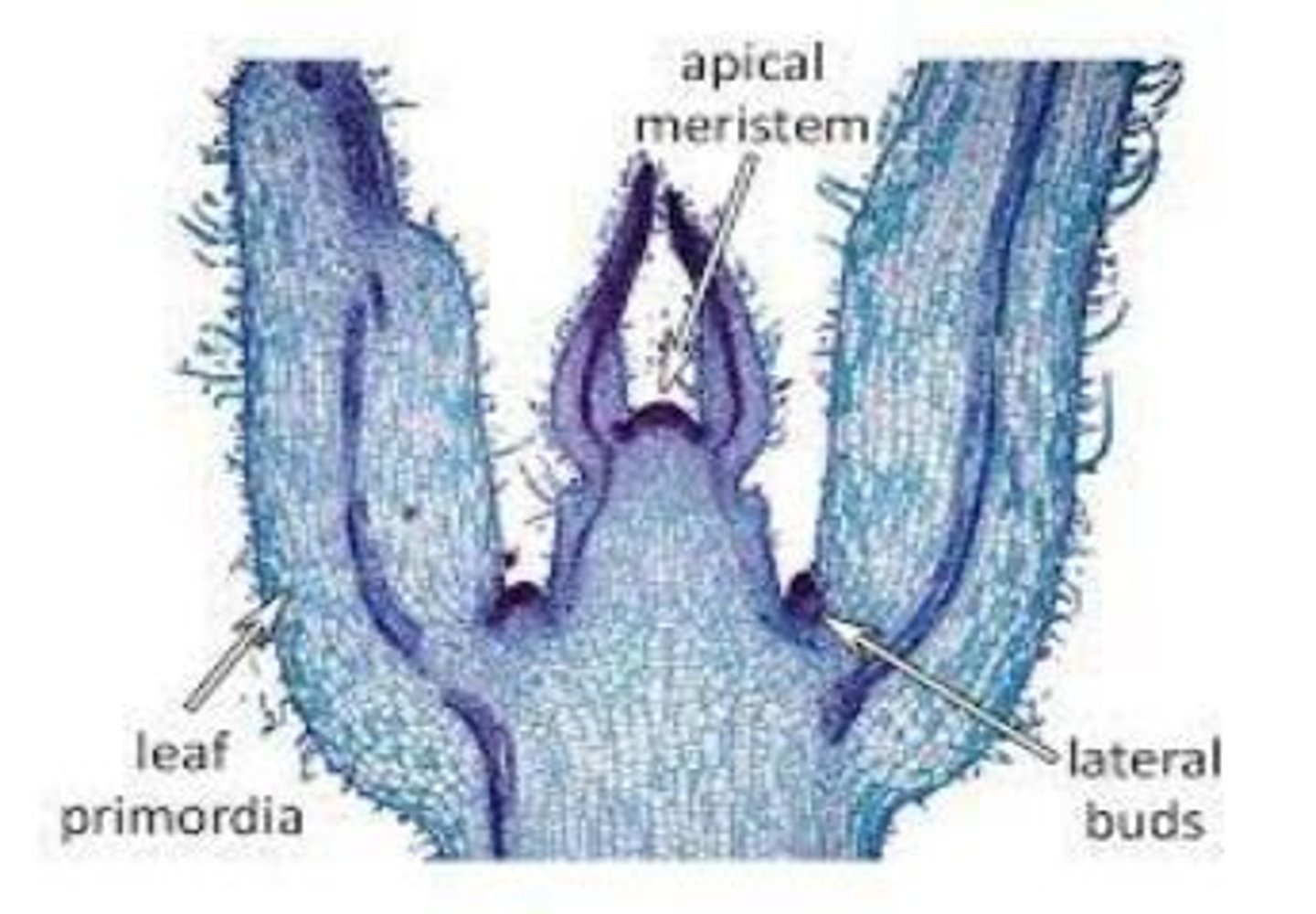
Stipules
Usually paired outgrowths at the base of leaves (particularly dicot leaves).
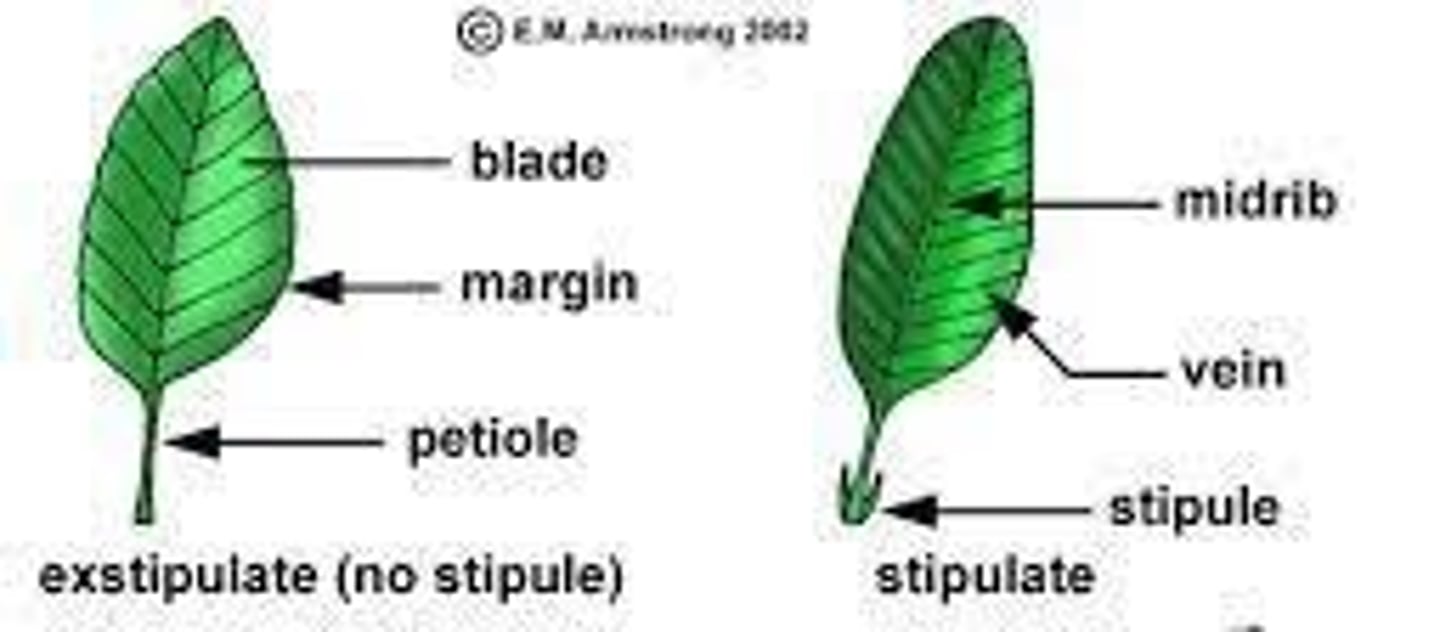
Stipulate
Those leaves with stipules.
Exstipulate
Those leaves without stipules.
Petiole
Stalk of the leaf attached to the stem.
Petiolate
When petiole is present.
Sessile
When petiole is absent.
Clasping (or Amplexicaul)
A sessile leaf with free bases partly or entirely surrounding the stem.
Leaf Base
The part near the petiole.
Leaf Sheath
In monocots, the leaf base is expanded into a structure called the leaf sheath, which partially or completely covers the stem.
Leaf Blade/Lamina
The green flatted portion which performs most of the photosynthesis in the plant.
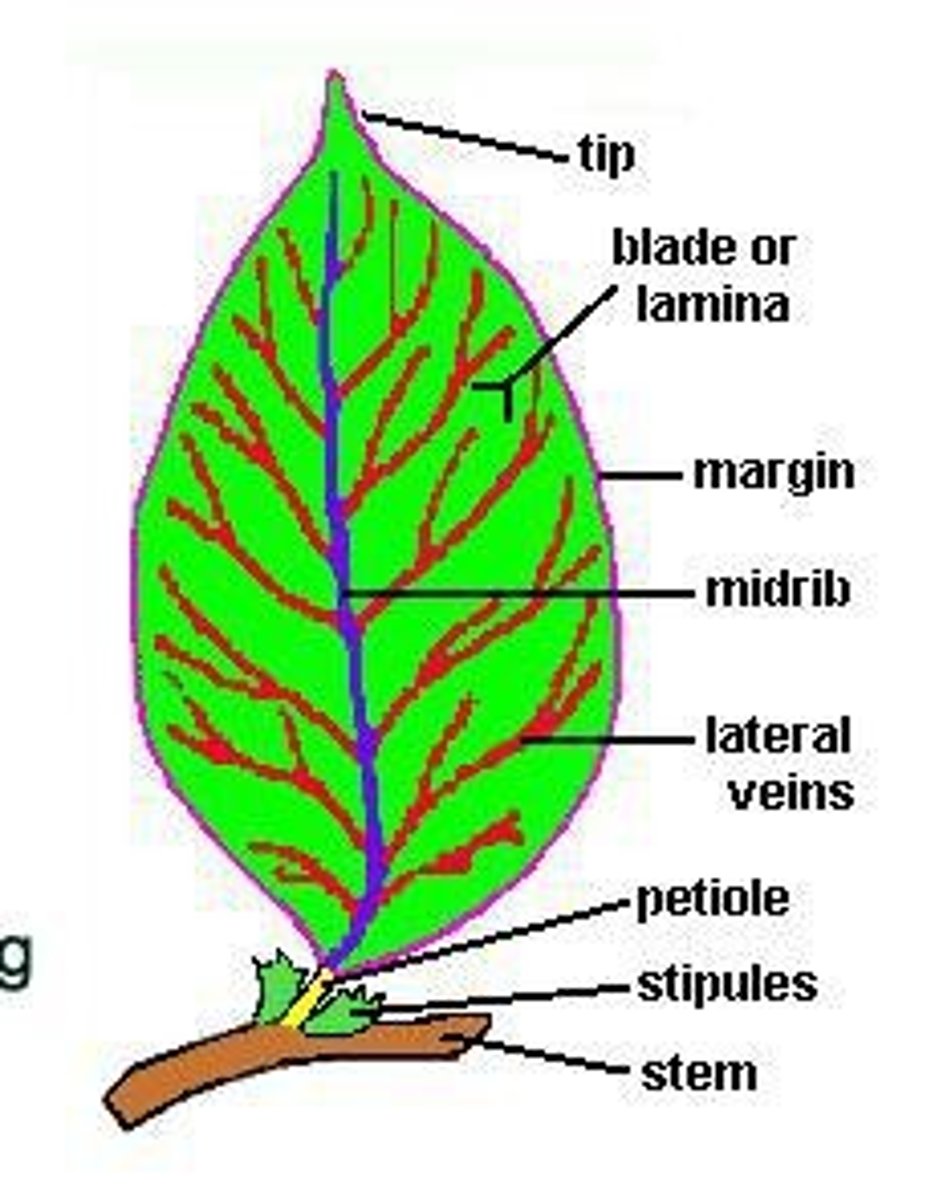
Midrib
A strong or thick vein that runs through the leaf blade from its base to the apex.
Phyllotaxy
The arrangement of leaves on the stem.
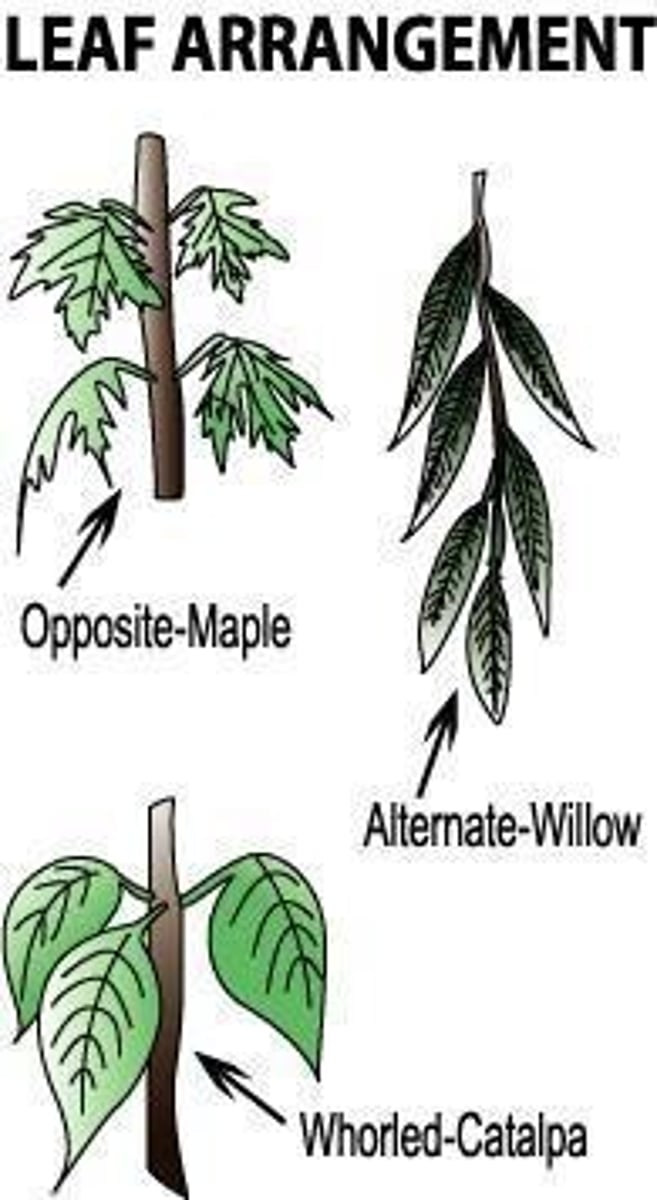
Alternate or Spiral Arrangement
1 leaf per node, with the second leaf being above the first but attached on the opposite side of the stem.
Opposite Arrangement
2 leaves at a node, on opposite sides of the stem.
Whorled Arrangement
3 or more leaves at a node.
Simple Leaves
Have a single, undivided blade (ex: banana/Musa acuminata).
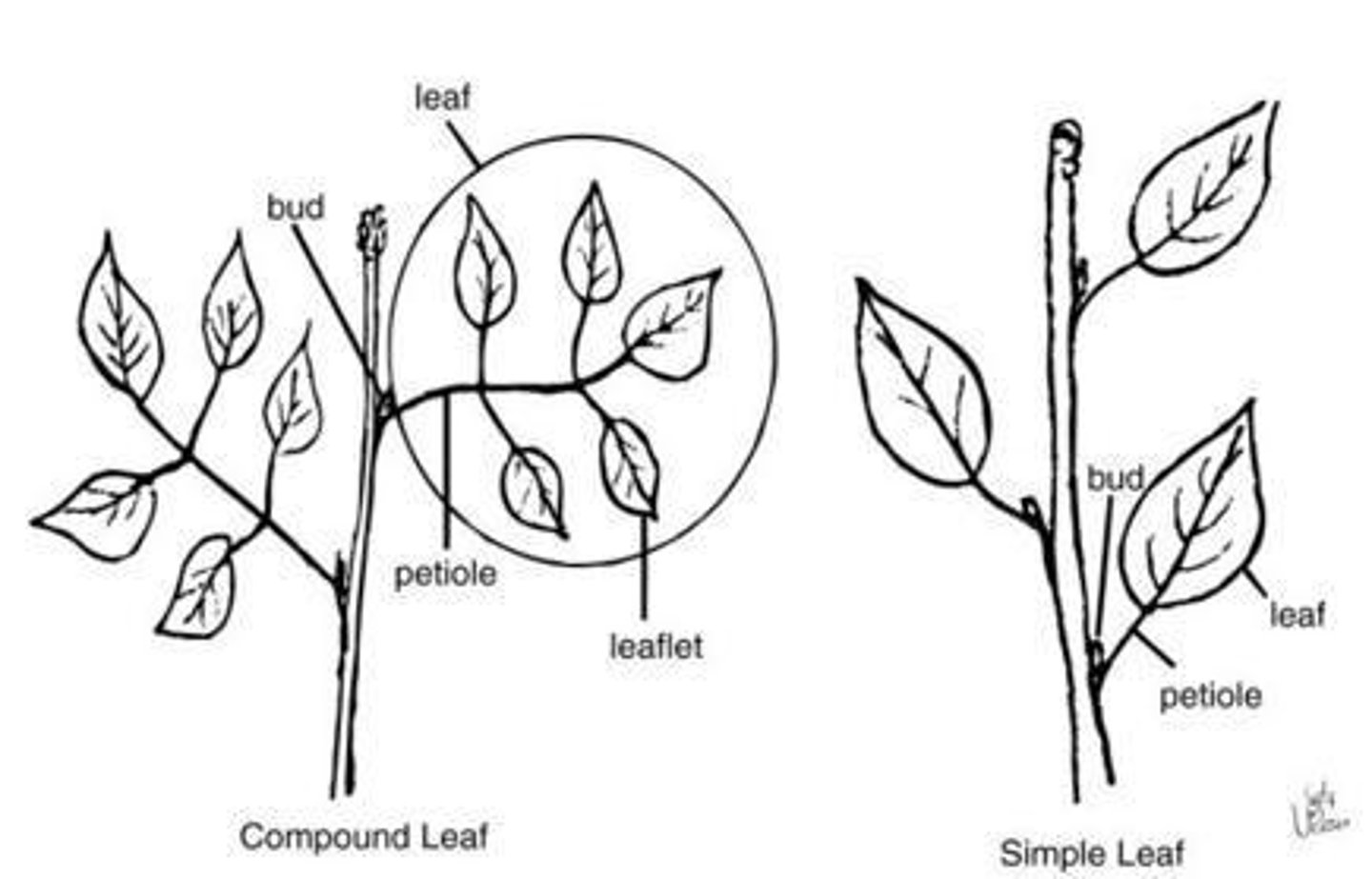
Compound Leaves
Have several leaflets attached to the petiole (Ex: mahogany / Swietenia mahagoni).
Axillary Bud
An axillary bud is present in the axil of a simple and compound leaf, but is never present in the axil of the leaflet of a compound leaf.
Pinnately Compound Leaves
The midrib, known as the rachis, bears leaflets arranged in a linear sequence.
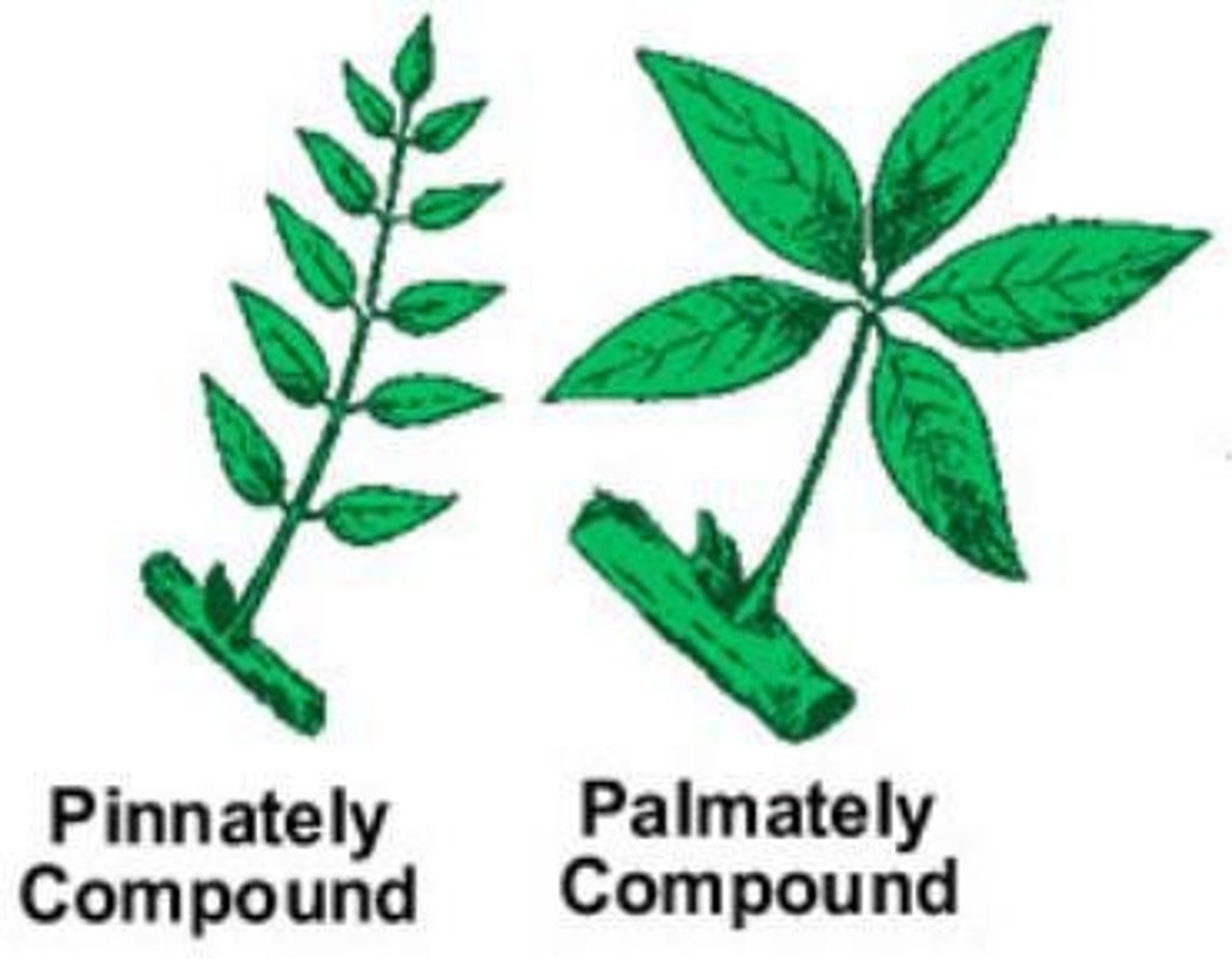
Palmately Compound Leaves
The leaflets are attached to the tip of the petiole from which they radiate.
Unipinnate
The leaflets are attached directly on the rachis (ex: kamias / Averrhoa bilimbi).

Bipinnate
When the compound leaf is twice-pinnate, the primary rachis branches into the secondary rachis, to which the leaflets are attached (ex: makahiya / Mimosa pudica).
Tripinnate
There are rachises of the first, second, and third orders.
Tamarindus indica
Commonly known as Tamarind.
Azadirachta indica
Also known as Neem tree, produces azadiractin, an insect repellent.
Caesalpinia pulcherrima
Commonly known as Peacock flower.
Moringa oleifera
Commonly known as Malunggay.
Coriandrum sativum
Commonly known as Cilantro.
Paripinnate
Pinnately compound leaves in which leaflets are borne in pairs along the rachis without a single terminal leaflet, also known as 'even-pinnate'.
Imparipinnate
Pinnately compound leaves with a lone terminal leaflet rather than a terminal pair of leaflets, also known as 'odd-pinnate'.
Decompound
A leaf having divisions that are themselves compound.
Leaf venation
Refers to the arrangement of veins and veinlets in the leaf.
Netted or reticulate venation
Characterized by one or more large veins from which smaller veins branch out and interconnect, forming a network pattern, typical of most dicots.
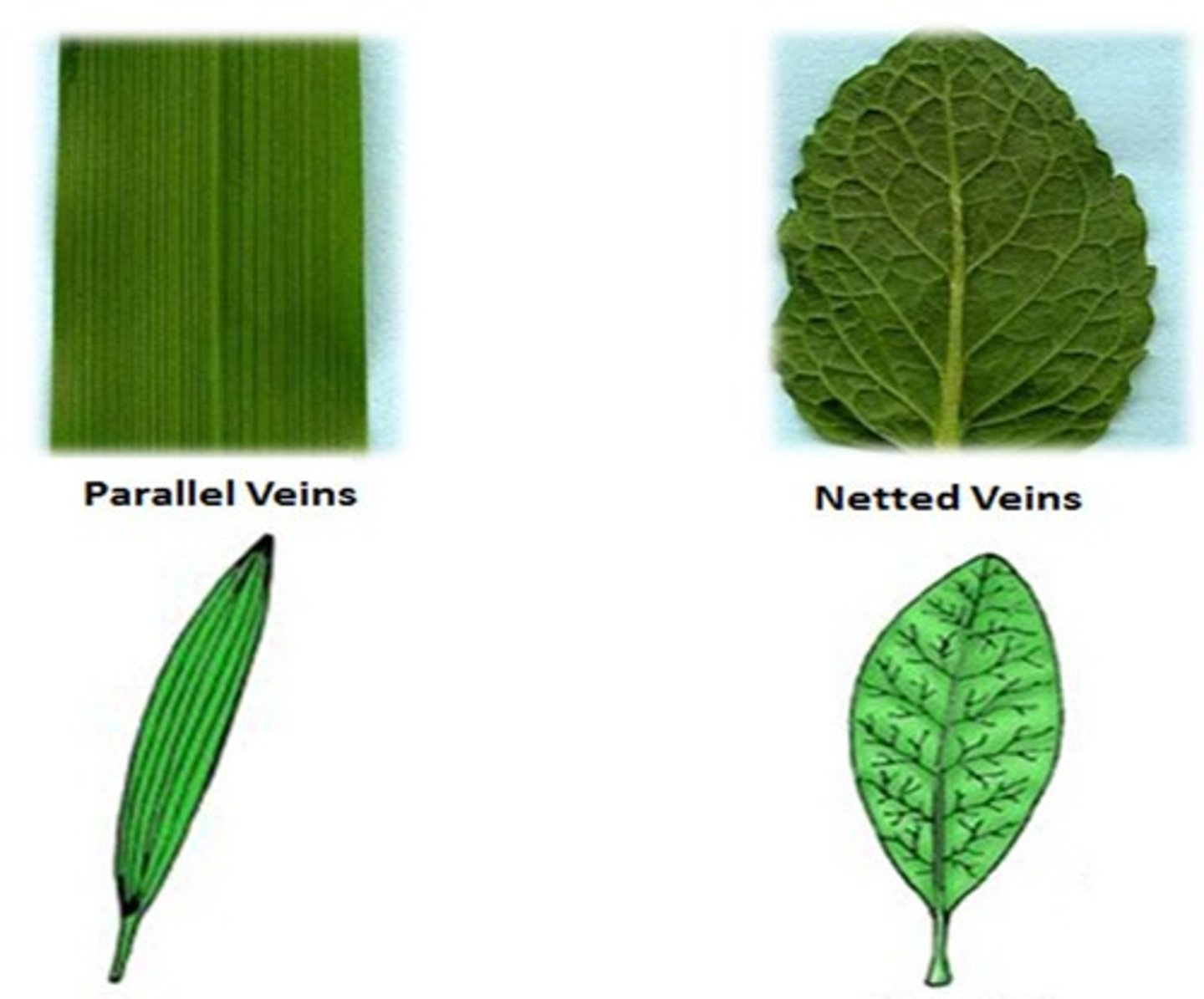
Pinnately reticulate
Has one principal vein or midrib from which smaller veins and their branches spread out in all directions in the blade.
Palmately reticulate
Has several large veins radiating from around the tip of the petiole.
Parallel venation
Veins run parallel to each other, characteristic of monocots.
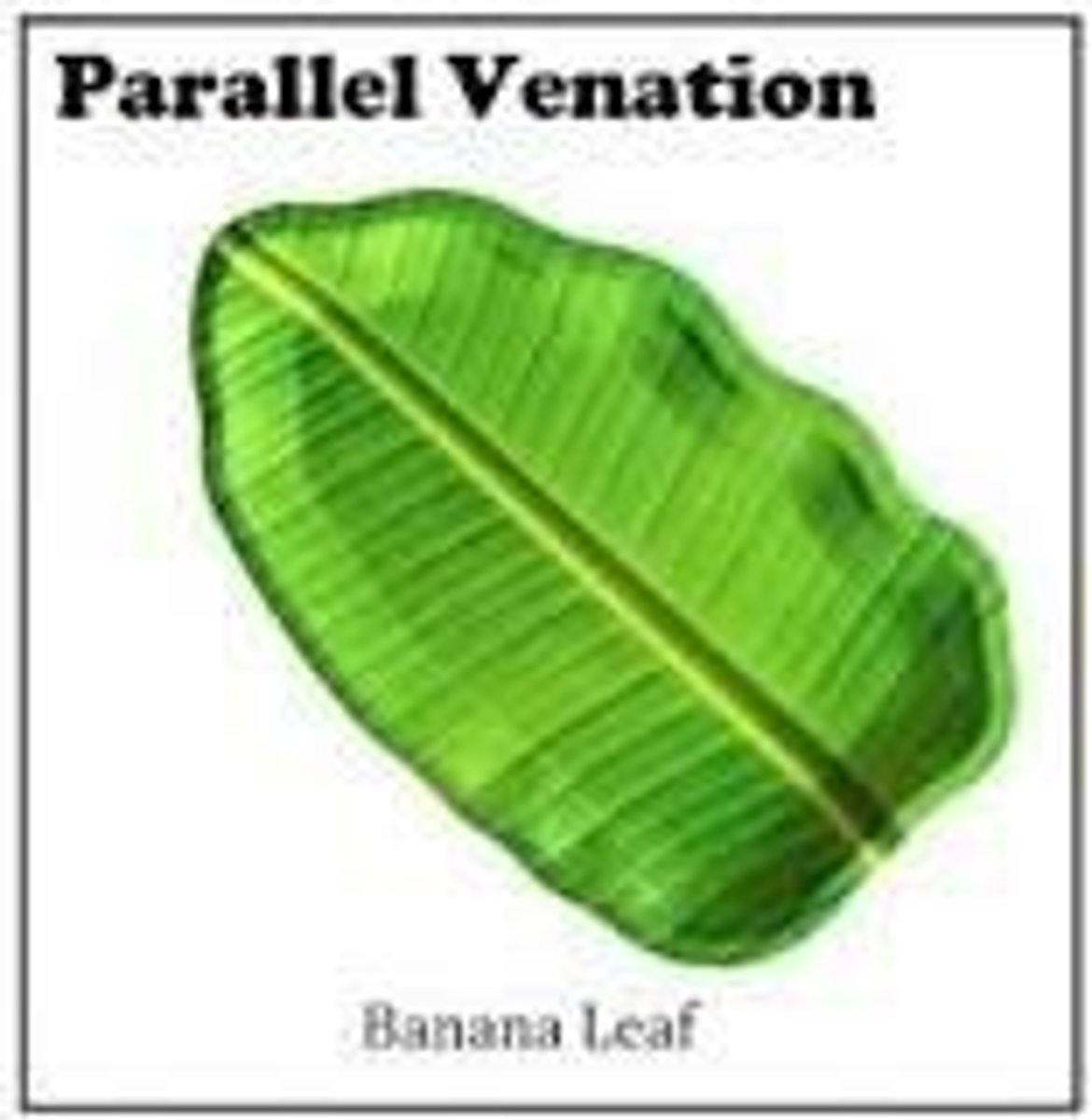
Banana leaves
Monocot with leaf sheath, spiral leaf arrangement, simple leaf type, parallel leaf venation, and undulate leaf margin.
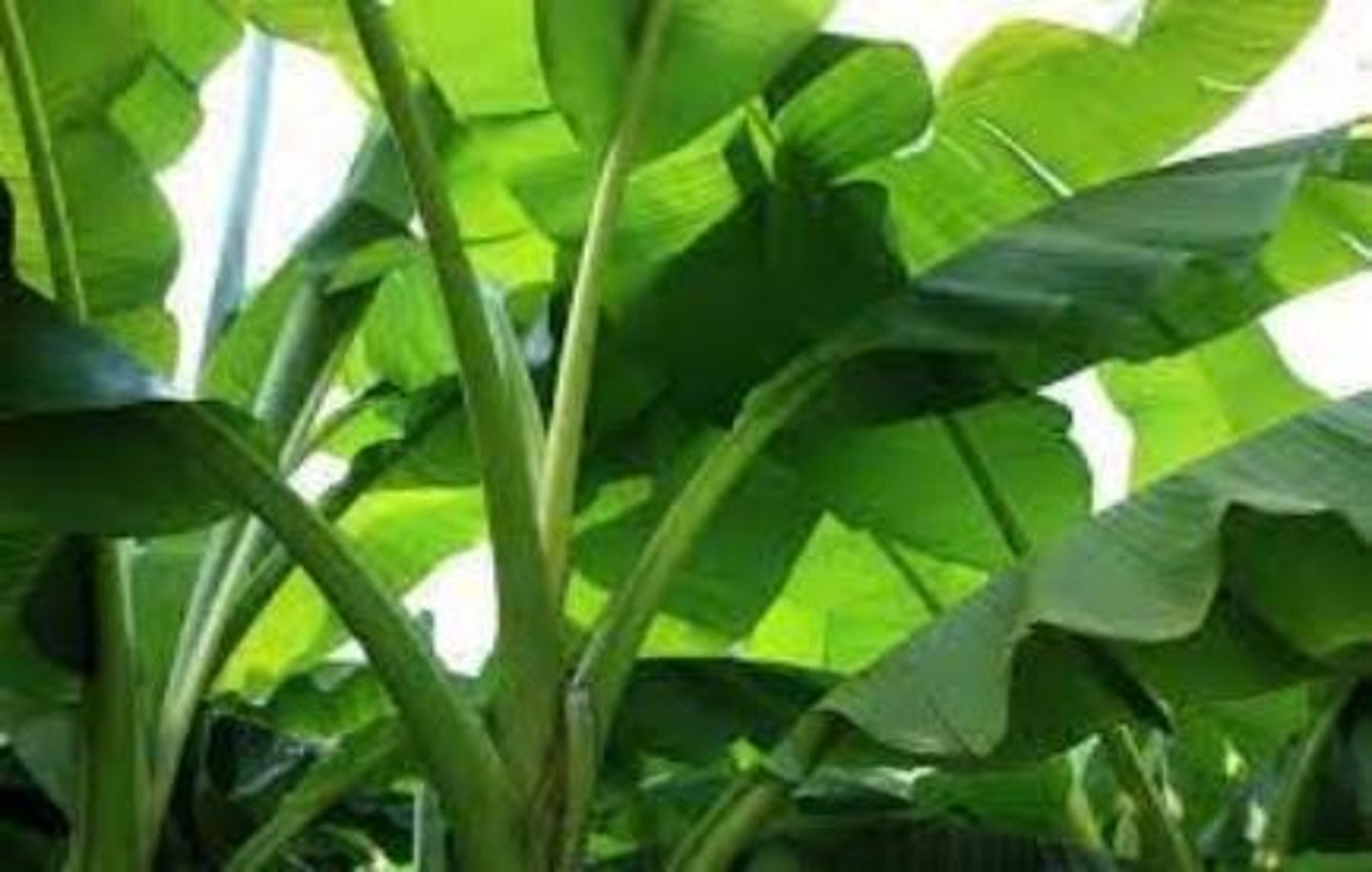
Papaya leaves
Dicot with alternate leaf arrangement, simple leaf type, palmate leaf venation, and incised leaf margin.
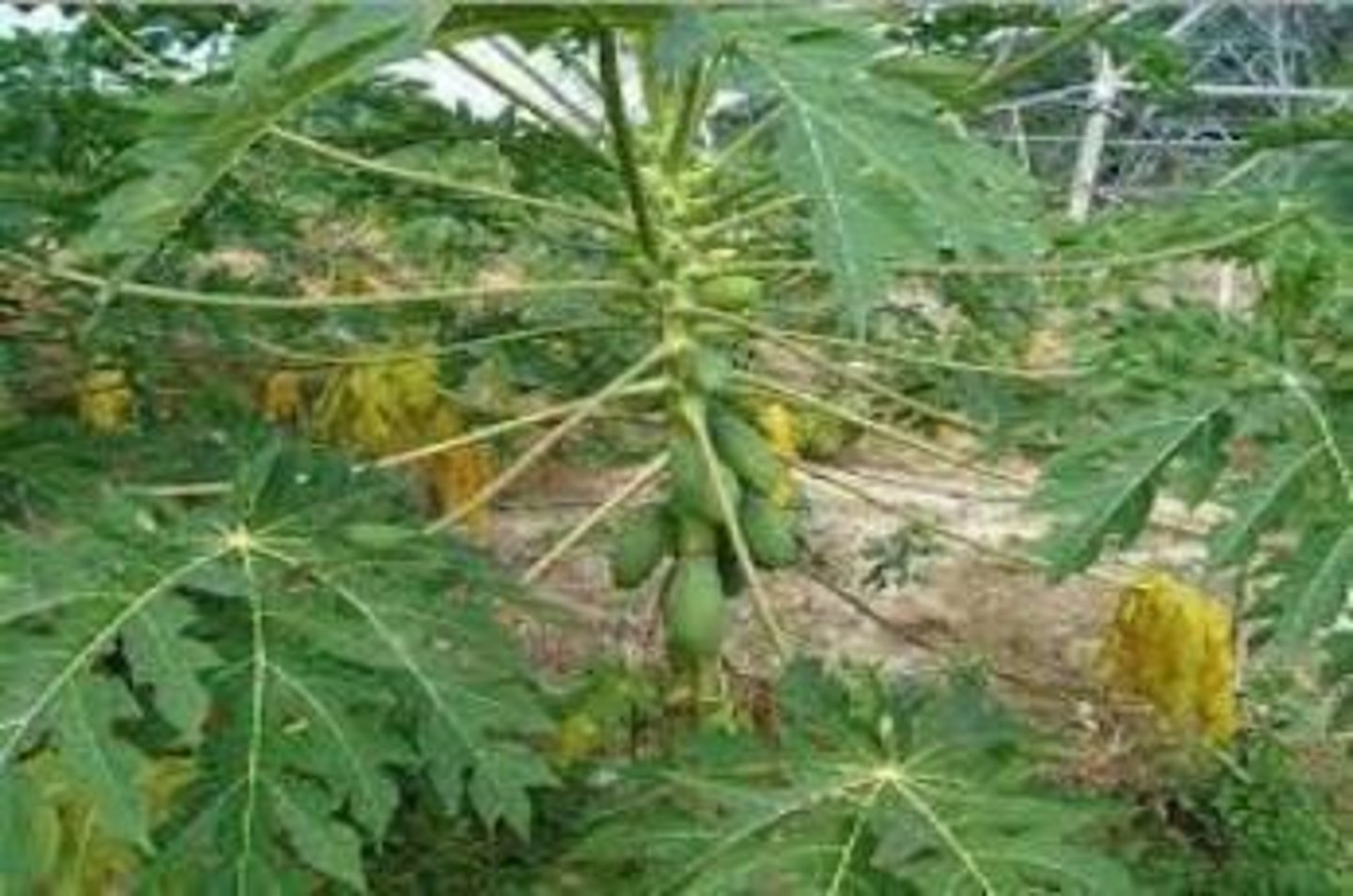
Palisade
Layer of mesophyll composed of long, cylindrical, compactly-arranged cells with numerous chloroplasts, primarily for light absorption and food manufacture.
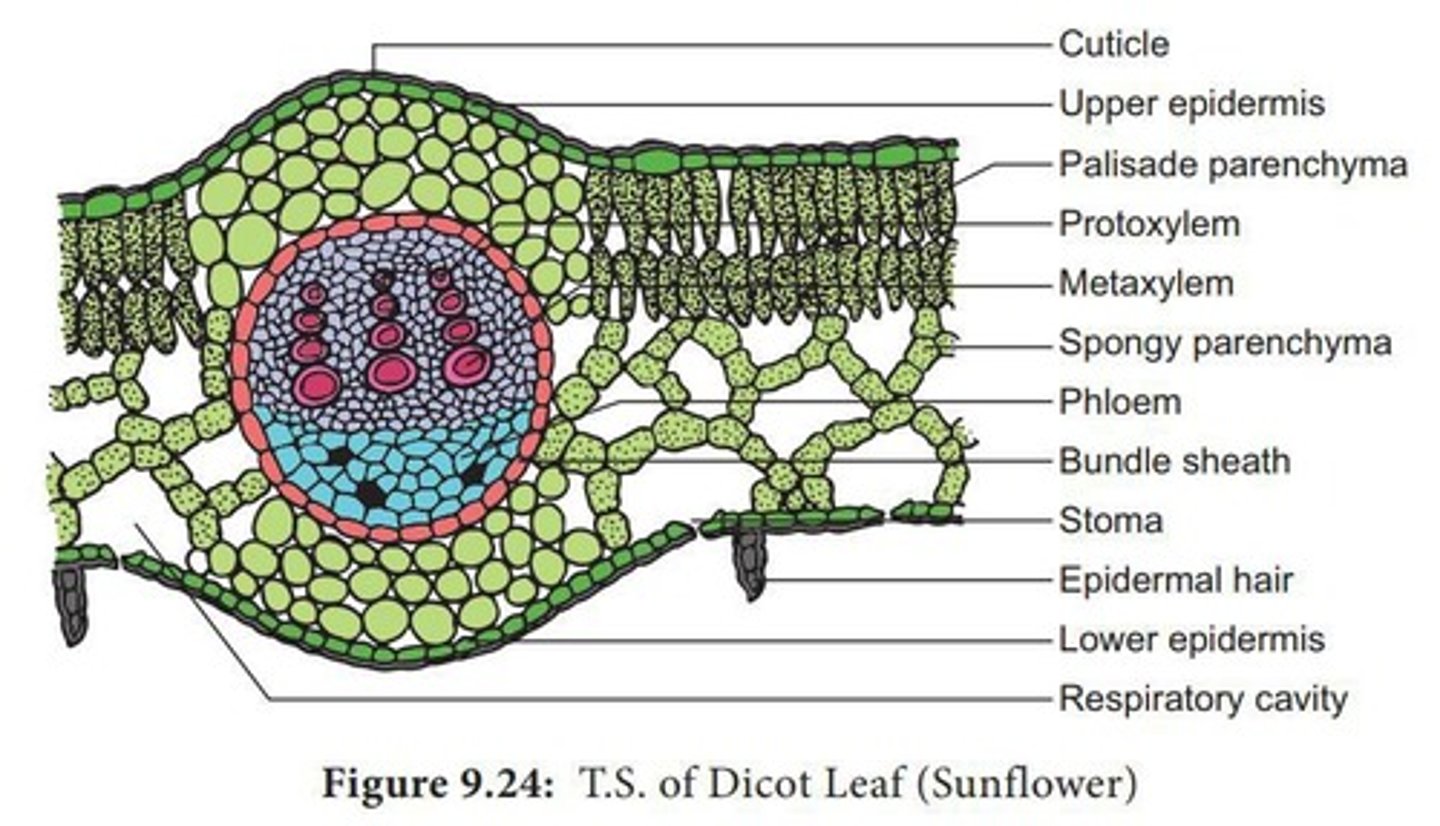
Upper epidermis
Single layer of similar cells covering the upper surface of the leaf, generally with a waxy cuticle to prevent excessive water loss, usually contains no chloroplasts.
Mesophyll
Ground tissue lying between the upper and lower epidermis, consisting of palisade parenchyma and spongy parenchyma.
Spongy parenchyma
Lower part of the mesophyll consisting of oval, circular, or irregularly shaped cells with chloroplasts and intercellular spaces.
Veins
Cylindrical strands of vascular tissues in the mesophyll, consisting of xylem and phloem.
Xylem cells
Have angular walls and are present towards the upper epidermis.
Phloem cells
Less distinct, thin-walled, and located below the xylem towards the lower epidermis.
Lower epidermis
Similar to upper epidermis but with thinner cuticle and larger number of stomata, controlling gas exchange and water vapor loss.
Guard cells
Two kidney-shaped cells surrounding each stoma, controlling its opening and closing.
Stomata
Present on the epidermis of leaf, young stem and floral parts.
Hydathodes
Present on the margins of leaf where the vascular supply (vein) ends.
Transpiration
Removal of water from the stomata.
Guttation
Removal of water from the hydathodes, usually noticeable in the early morning when grassy fields are moist with dew.
Capillary action
The movement of water from the roots up the stem to the leaves.
Evaporation
The process by which most of the water plants take up is lost to the atmosphere.
Rate of transpiration
Regulated by the size of the opening of the stomates.
Temporal regulation of stomata
Stomata are open during the day and closed at night.
Reproduction (specialized leaves)
Buds may grow along the base, apex, and tips of blades and petioles (e.g., Kataka-taka / Kalanchoe pinnata).
Aeration (specialized leaves)
Enlarged petiole for buoyancy (e.g., water hyacinth / Eichhornia crassipes).
Support (specialized leaves)
Presence of hooks or tendrils, produced usually from the node of a stem (e.g., Squash / Cucurbita maxima).
Protection (specialized leaves)
Presence of spines (modified leaves or stipules) (e.g., cacti / Mammillaria spinosissima).
Storage (specialized leaves)
Especially in desert plants with succulent leaves that retain water in their large, thin-walled parenchyma cells (e.g., cacti / Mammillaria spinosissima, aloe / Aloe vera / Aloe barbadensis).
Attraction (specialized leaves)
Brightly-variegated leaves (have more than one color) (e.g., Anthurium / Anthurium andraeanum).
Spathe
A pair of bracts (plate) partly enclosing a spadix.
Absorption (specialized leaves)
Insectivorous leaves (e.g., pitcher plant / Nepenthes mirabilis).
Digestive glands
Special tissues present in insectivorous leaves.
Stem
A stem is the other structural axis (line) for the plant after roots.
Trunk
The elongated stem of a tree that supports branches and has a woody outer bark.
Boughs
Large branches of a tree.
Twigs
Small branches of a tree.
Functions of Stem
An organ of the plant that holds structures such as leaves, flowers, and fruits.
Water and Mineral Transport
Stems carry water and minerals from the roots to the leaves so that photosynthesis can take place.
Node
Area or region where leaves are attached.
Internode
Area or region between nodes.
Bud
Occurs in the angle between the petiole and the stem.
Axillary or Lateral Bud
Located in the axil. They may become branches or flowers.
Terminal or Apical Bud
Often present at the tip of the twig (slender shoot growing from the stem).
Leaf Scar
Scar left by a fallen leaf.
Bundle Scars
Scars that mark the location of the water-conducting tissues located within the leaf scars.
Lenticels
Dark spots or elevations that allow gas exchange in the stem.
Pedicel
A stem that attaches a single flower to the inflorescence (group or cluster of flowers).
Peduncle
The stalk bearing a flower or fruit, or the main stalk of an inflorescence.
Monocot Stem
A type of stem characterized by a specific internal structure.
Dicot Stem
A type of stem formed during primary growth (length) and secondary growth (diameter).
Epidermal Region
Single-celled outermost layer of the stem, may have cuticle and stomata.
Cutin
Fatty substance secreted by epidermal cells.
Cuticle
Protective layer formed by cutin.
Trichomes
Hair-like structures on the surface of plants.
Cortex
Complex region derived from ground meristem, composed of large, thin-walled parenchyma cells.
Stele or Vascular cylinder
Innermost tissue region of the stem.
Vascular bundles
Consists of vascular tissues (xylem and phloem) and cambium.
Primary xylem
Inner xylem layer in old woody dicot stems.
Secondary xylem
Outer xylem layer in old woody dicot stems.
Secondary phloem
Inner phloem layer in old woody dicot stems.
Primary phloem
Outer phloem layer in old woody dicot stems.
Annual rings
Concentric circles formed by new cells each year in trees.
Dendrochronology
The study of the annual growth in trees.
Heartwood
The dead, inner wood that often comprises the majority of a stem's cross-section.